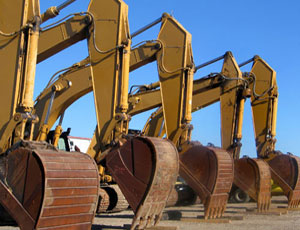A down economy could provide a positive boost to opponents of looming targets for construction- equipment emissions in California. A new study suggests formulas that were used by the California Air Resources Board (CARB) to establish future emissions-reduction targets overestimated the levels of nitrogen oxide and particulate matter from off-road diesel equipment in the state.

The findings are based on new data released from an inventory of construction equipment currently in use in the state conducted this year by the Sacramento-based board. The Associated General Contractors of America asserts the data proves equipment users already are in compliance with emissions targets and would not need to retrofit, repower or replace equipment before 2014.
The current targets are based on equipment estimates used when CARB began drafting its rules in 2000 and the new data offers a more accurate assessment, says AGC General Counsel Mike Kennedy. AGC, along with research firm Sierra Research, Sacramento, used the same models and assumptions that CARB originally employed, but replaced some data with the new figures. “The new inventory data shows operators of off-road diesel equipment will be 58,400 tons below the state’s target levels for nitrogen oxide in 2010 and 173,000 tons below the state’s target by 2025,” says Kennedy. “Meanwhile, equipment operators will be 2,480 tons below particulate matter target levels in 2010 and will stay below target levels in 2011, 2012 and 2013.” He credits the industry’s performance to a combination of proactive industry compliance and a large-scale drop in equipment use caused by the recession. “Turns out, the state’s contractors, with help from the economy, are far more effective at cutting emissions than state officials ever anticipated,” Kennedy says.
In a Dec. 3 briefing to CARB officials, AGC representatives noted that in the four years since the off-road rule was developed, nearly 35% of the state’s construction workers—about 326,000 people—have lost their jobs. Ken Simonson, chief economist at AGC, says the original CARB model estimated the industry would add 8,000 jobs per year between 2006 and 2014. He adds that the gross domestic product originating in California’s construction industry dropped by $13 billion since 2006. “Unfortunately, every indication is that 2010 will be equally as devastating for the state’s construction industry,” Simonson says.
Among its recommendations, AGC is asking CARB to reevaluate the costs and benefits of targets on average equipment fleets, create a “safe harbor” for fleet owners at risk of suffering “serious financial harm” and clarify distinctions between small, medium and large fleets. Current rules impose deadlines on larger fleets first. In light of concerns over the availability and performance of filter retrofits on equipment, AGC also wants CARB to conduct a technical feasibility report on installing verified diesel-emissions control (VDEC) devices.While contractors wait for lower-emitting Tier-4 engines to hit the market, turning to particulate filters has proven challenging, says Tom Foss, president and chief operating officer of Griffith Co., Brea, Calif. “We have 15 or more pieces of equipment that we have put filters on,” he says. “Some work OK. Some clog by mid-day with continuous maintenance problems and we lose hours of production. The technology is just not there with these filters. With these new findings, if we can wait until the Tier-4 [equipment] begins to hit the street, it would be a wiser decision.”
Kennedy says it is up to CARB officials to rule. But he does not rule out the possibility of a future legal challenge if the board’s action is not performed in a timely manner. “We want to give the board a reasonable amount of time to look at the results we have released,” he says. “But we cannot give them forever….If at some point they do not come back and provide some significant level of relief, we are going to insist on an up-and-down decision. If not, anything is possible after that.”
CARB officials could not be reached for comment on the findings.

Post a comment to this article
Report Abusive Comment